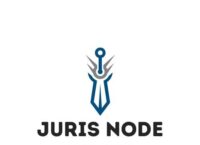Reporting entities such as banking institutions, financial institutions, intermediaries, and more have various obligations under the Prevention of Money Laundering Act (PMLA), 2002, to maintain records, access information, and perform due diligence. One of the critical aspects of due diligence is the categorization of customers according to their perceived risk levels. In this blog post, we will discuss the importance of risk categorization and what reporting entities need to know about it.
Why is Risk Categorization Important?
Risk categorization is the process of identifying and classifying customers based on their level of risk. It is crucial for reporting entities as it helps them determine the level of due diligence required to comply with regulations. By categorizing customers, reporting entities can assess the risk posed by a particular customer and tailor their risk management and compliance measures accordingly. This enables reporting entities to focus their resources on high-risk customers, reducing the likelihood of money laundering, terrorist financing, or other financial crimes.
Types of Risk Categories
Reporting entities categorize customers into various risk categories based on factors such as the type of customer, nature of the business, transaction patterns, and more. The following are some common categories of risk:
1. Low-Risk Customers: These are customers who are considered to pose a minimal risk of money laundering or terrorist financing. They include individuals or entities with a low net worth, a low volume of transactions, or who engage in low-risk activities.
2. Medium-Risk Customers: These are customers who pose a moderate risk of money laundering or terrorist financing. They include individuals or entities with a moderate net worth, a moderate volume of transactions, or who engage in medium-risk activities.
3. High-Risk Customers: These are customers who pose a high risk of money laundering or terrorist financing. They include individuals or entities with a high net worth, a high volume of transactions, or who engage in high-risk activities.
4. Politically Exposed Persons (PEPs): These are individuals who hold prominent public positions or have held such positions in the past. PEPs are considered high-risk customers due to their potential for bribery, corruption, and abuse of power.
5. Non-Face-to-Face Customers: These are customers who do not have physical interaction with the reporting entity. They pose a higher risk of money laundering as it is difficult to verify their identity and assess the legitimacy of their transactions.
How to Perform Risk Categorization
Reporting entities can perform risk categorization using various methods. Some common methods include:
1. Know Your Customer (KYC) Procedures: KYC procedures involve collecting information about customers’ identity, source of funds, and intended nature of business. This information is then used to categorize the customer into a particular risk category.
2. Transaction Monitoring: Reporting entities can monitor customers’ transactions to identify patterns or anomalies that may indicate a higher level of risk. For example, a sudden increase in the volume or frequency of transactions may indicate a higher level of risk.
3. Source of Funds Analysis: Reporting entities can analyze the source of funds used by customers to determine their level of risk. Customers who use legitimate sources of funds, such as salary or investments, are considered lower risk, while those who use illegitimate sources, such as criminal activities, are considered higher risk.
4. Enhanced Due Diligence (EDD): EDD is a process of performing a more in-depth analysis of customers who are considered high-risk. This may involve collecting additional information, conducting site visits, or verifying the customer’s identity and source of funds through third-party sources.
Once the customer has been categorized, reporting entities can determine the level of due diligence required for that particular customer. For example, low-risk customers may only require basic due diligence, while high-risk customers may require enhanced due diligence and ongoing monitoring.
Challenges in Risk Categorization
While risk categorization is essential, there are some challenges that reporting entities may face when performing it. Some of these challenges include:
1. Lack of Customer Information: Reporting entities may not have access to complete or accurate customer information, making it difficult to categorize customers accurately.
2. Limited Resources: Reporting entities may have limited resources to perform due diligence on all customers, leading to a focus on high-risk customers and potentially missing low or medium-risk customers.
3. Dynamic Customer Risk: Customer risk can change over time due to various factors such as changes in business activities, transaction patterns, or personal circumstances. Reporting entities need to continuously monitor customer risk and update their risk categorization accordingly.
Conclusion
Risk categorization is a crucial component of a reporting entity’s anti-money laundering (AML) and counter-terrorism financing (CTF) compliance program. By categorizing customers into different risk categories, reporting entities can tailor their risk management and compliance measures to address the specific risks posed by each customer. However, risk categorization can be challenging due to the lack of customer information, limited resources, and dynamic customer risk. Reporting entities need to be aware of these challenges and take steps to mitigate them to ensure effective risk categorization.

By:
Vijay Pal Dalmia, Advocate
Supreme Court of India & Delhi High Court
Email id: vpdalmia@gmail.com
Mobile No.: +91 9810081079




